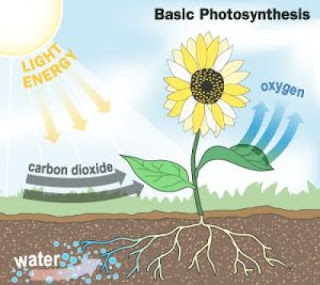Badak adalah binatang berkuku ganjil (perrisodactyla), pada tahun 1758 Linnaeus telah memberi nama marga (genus) Rhinoceros sondaicus kepada Badak Jawa.
Rhinoceros: berasal dari bahasa Yunani yaitu rhino, berarti “hidung” dan ceros, berarti “cula” , sondaicus merujuk pada kepulauan Sunda di Indonesia. (Bahasa Latin -icus mengindikasikan lokasi); “Sunda” berarti “Jawa”.
Sejarah Badak
- Badak muncul pada jaman tertier (± 65 juta tahun yang lalu) dan terdiri dari 5 periode :
Periode Paleocene ( ± 60 - 50 juta tahun yang lalu) - Periode Eocene (± 50 - 45 juta tahun yang lalu
- Periode Oligocene (± 35 - 25 juta tahun yang lalu)
- Periode Miocene (± 25 - 10 juta tahun yang lalu
- Periode Pleocene (± 10 juta tahun yang lalu)
Seperti halnya Dinosaurus yang telah punah 70 juta tahun yang lalu, badak yang pada enam puluh juta tahun yang lalu ada 30 jenis yang hidup di bumi juga mengalami kepunahan. Pada saat ini hanya 5 jenis badak hidup di dunia diantaranya 3 jenis badak hidup di Asia, yaitu:
- Badak Sumatera (Sumatran rhino) bercula dua atau Dicerorhinus sumatrensis Fischer, 1814
- Badak Jawa (Javan rhino) bercula satu atau Rhinocerus sondaicus Desmarest, 1822
- Badak India (Indian rhino) bercula satu atau Rhinocerus unicornis Linnaeus, 1758
- Badak Hitam Afrika bercula cula (Black Rhino) atau Diceros bicormis
- Badak Putih Afrika bercula dua (White Rhino) atau Cerathoterium simum
Deskripsi Badak Jawa (Rhinoceros sondaicus)
- Tinggi dari telapak kaki hingga bahu berkisar antara 168-175 cm.
- Panjang tubuh dari ujung moncong hingga ekor 392 cm dan panjang bagian kepala 70 cm.
- Berat tubuhnya dapat mencapai 1.280 kg.
- Tubuhnya tidak berambut kecuali dibagian telinga dan ekornya.
- Tubuhnya dibungkus kulit yang tebalnya antara 25-30 mm.
- kulit luarnya mempunyai corak yang mozaik.
- Lipatan kulit di bawah leher hingga bagian atas berbatasan dengan bahu.
- Di atas punggungnya juga terdapat lipatan kulit yang berbentuk sadel (pelana) dan ada lipatan lain di dekat ekor serta bagian atas kaki belakang.
- Badak Jawa bercula satu Ukuran cula dapat mencapai 27 cm.
- Badak betina tidak mempunyai cula,
- Warna cula abu-abu gelap atau hitam, warnanya semakin tua semakin gelap, pada pangkalnya lebih gelap dari pada ujungnya.
Secara taksonomi Klasifikasi Badak Jawa sebagai berikut:
Kingdom: : Animalia
Phylum : Chordata
Sub phylum : Vertebrata
Super kelas : Gnatostomata
Kelas : Mammalia
Super ordo : Mesaxonia
Ordo : Perissodactyla
Super famili : Rhinocerotides
Famili : Rhinocerotidae
Genus : Rhinoceros (Linnaeus, 1758)
Spesies : Rhinoceros sondaicus (desmarest, 1822)
Perilaku Badak
Badak termasuk binatang nocturnal artinya segala aktivitasnya dilakukan pada sore, malam, dan pagi hari. Pada siang hari pada umumnya mereka beriistirahat. Bekas tidurnya sering ditemukan berada dekat dengan sebuah kubangan atau di bawah pohon atau rumpun bambu, sering pula ditemukan di hutan terbuka pada puncak sebuah bukit Badak berbaring tidur dan istirahat dengan satu atau kedua kakinya merentang ke depan, berlawanan dengan Diceros yang sebelum berbaring mereka menyusun jerami disekelilingnya dengan kaki depannya. Ketika beristirahat badak meletakan sebagian sisi tubuhnya ke tanah. Badak bukan tipe penidur yang sungguh. Badak sering dijumpai beristirahat di tanah padat selain kubangan. Tempat beristirahat ditandai dengan bekas atau jejak kulit badak di tanah, tetapi kadang-kadang tidak berbekas bila tanahnya cukup keras. Badak beristirahat tidak selalu berbaring, tetapi berdiri, terlihat ngantuk (tidur ayam) dengan kepala terkulai ke bawah.
Badak jantan kelihatannya lebih senang mengembara dari pada badak betina. Badak Secara teratur selalu mengikuti lintasan-lintasan yang sama, terutama didekat tempat berkubang dan tempat untuk salt licks (penggaraman), selalu mengikuti jalur-jalur tertentu yang sering digunakan oleh generasi badak sebelumnya. Berjalan pelan dan siap siaga, dengan tubuh dilumuri tanah, dan ini berlangsung selama 24 jam. Bila menemukan jalur-jalur lain dalam hutan dan yang disenanginya, badak akan terus berkeliling di daerah tersebut selama berhari-hari
Badak dapat berjalan dengan melangkah, lari atau melompat-lompat, kedua cara terakhir ini hanya terlihat pada hewan-hewan yang melarikan diri. Kemampuan badak melewati tanah-tanah terjal sangat mengagumkan. Bila diganggu, badak dapat membuat lompatan, yaitu dengan kaki depan terangkat dan ditekuk melewati semak belukar.
Makanan Badak Jawa
Tidak kurang dari 190 jenis tumbuhan merupakan sumber pakan bagi badak. Dari jumlah tersebut, 4 jenis merupakan sumber pakan utama, yaitu kedondong hutan (Spondias pinnata), tepus (Ammomum sp), selungkar (Leea sambucina) dan segel (Dillenia excelsa). Jenis tumbuhan pakan banyak ditemukan pada daerah belukar di Ujung Kulon bagian timur seperti Nyiur, Nyawaan, Citelang, Cikarang, Pamegaran, Cigenter dan Cihandeuleum. Tumbuhan pakan di dalah kawasan Taman Nasional Ujung Kulon berhasil diidentifikasi sebanyak 453 jenis tumbuhan, diantaranya berupa pohon 362 jenis (80%) dan sebanyak 148 jenis dari 62 famili dengan 120 genus merupakan pakan badak. Pakan Badak Jawa di Taman Nasional Ujung Kulon. Bagian tumbuhan yang dimakan berdasarkan temuan di lapangan adalah pucuk, daun, umbut, batang, kulit dan buah dengan tingkat kesukaan 87 % tingkat sapling.
Javan Rhino
Rhinos are odd-hoofed animals (perrisodactyla), in 1758 Linnaeus gave the clan name (genus) to the Javan rhino Rhinoceros sondaicus.
Rhinoceros: derived from the Greek rhino, meaning "nose" and ceros, means "horn", referring sondaicus Sunda Islands in Indonesia. (Latin-ICUs indicate locations); "Sundanese" means "Java".
Rhino History
• Rhino appears at the time of tertiary (± 65 million years ago) and consists of 5 periods:
Paleocene period (± 60 - 50 million years ago)
Paleocene period (± 60 - 50 million years ago)
• Eocene Period (± 50-45 million years ago
• Oligocene period (± 35-25 million years ago)
• Miocene Period (± 25-10 million years ago
• Period Pleocene (± 10 million years ago)
Like the dinosaurs that became extinct 70 million years ago, the rhinoceros, which in sixty million years ago there were 30 species that live on the earth also suffered extinction. At present only 5 types of rhino living in the world including 3 types of rhinos live in Asia, namely:
1. Sumatran Rhino (Sumatran rhino) horned two or Dicerorhinus sumatrensis Fischer, 1814
2. Javan rhino (Javan rhino) horned one or Rhinocerus sondaicus Desmarest, 1822
3. Indian Rhinoceros (Indian rhino) horned one or Rhinocerus unicornis Linnaeus, 1758
4. Black-horned rhino horn of Africa (Black rhino) or Diceros bicormis
5. White African two-horned rhinoceros (White Rhino) or Cerathoterium simum.
Description of the Javan rhino (Rhinoceros sondaicus)
• The height of the soles of the feet to shoulder ranges from 168-175 cm.
• Length of body from tip of snout to tail length of 392 cm and 70 cm of the head.
• Weight 1280 kg body can achieve.
• His body is hairless except the ears and tail.
• His body wrapped in a thick skin between 25-30 mm.
• the outer skin has a mosaic pattern.
• Folds of skin under the neck to the top of the adjacent shoulder.
• On the back there are also saddle-shaped fold of skin (saddle) and there is a crease near the tail and upper rear legs.
• one-horned Javan rhino horn size may reach 27 cm.
• female rhino has no horns,
• horn color dark gray or black, the darker the color the older, darker at the base than at the ends.
The taxonomic classification of the Javan rhino as follows:
Kingdom: Animalia
Phylum: Chordata
Sub phylum: Vertebrata
Super class: Gnatostomata
Class: mammals
Super Order: Mesaxonia
Order: Perissodactyla
Super family: Rhinocerotides
Family: Rhinocerotidae
The genus: Rhinoceros (Linnaeus, in 1758)
Species: Rhinoceros sondaicus (Desmarest, 1822)
Rhino Behavior
Rhinoceros including nocturnal animals means all activities conducted in the afternoon, evening, and morning. By day they generally beriistirahat. The former are often found sleeping near a puddle or under a tree or clump of bamboo, are often found in open forest on top of a hill Rhino lay sleeping and resting with one or both legs stretched forward, as opposed to Diceros that before they lay down straw set surrounding the front leg. When resting rhino put some sides on the ground. Rhino not the type of sleeper that really. Rhinos are often found resting on solid ground in addition to wallow. Resting place is marked with rhino skin marks or traces on the ground, but sometimes not a trace when the land is hard enough. Rhino does not always lie down to rest, but stood, looking sleepy (sleep chicken) with his head slumped down.
Rhino seems to prefer wandering males than in female rhino. Regularly rhino is always follow the same trajectories, particularly nearby places wallowing and place for salt licks (salting), always follow certain pathways that are often used by generations of previous rhino. Walk softly and stands ready, with a body smeared with soil, and it lasted for 24 hours. If you find other paths in the forest and who have loved, rhinos will continue traveling in the area for days at
Rhino can be run by stepping, running or jumping, the two last way is only seen in animals that run away. Ability rhino through a steep lands is admirable. When disturbed, rhinos can make the jump, with front legs raised and bent over shrubs.
Javan Rhino Foods
No fewer than 190 plant species are a source of feed for the rhino. Of these, 4 species is the main food source, namely forest kedondong (Spondias pinnata), Tepus (Ammomum sp), selungkar (Leea sambucina) and seal (Dillenia excelsa). Food plant species are found in shrub areas in the eastern part of Ujung Kulon like Nyiur, Nyawaan, Citelang, Cikarang, Pamegaran, Cigenter and Cihandeuleum. Plants feed on dalah Ujung Kulon National Park area has been identified as many as 453 species of plants, including 362 species of trees (80%) and 148 species from 62 families with 120 genera a rhino feed. Feed Javan rhino in Ujung Kulon National Park. Plant parts are eaten according to the findings in the field is shoots, leaves, umbut, stems, bark and fruit with 87% preference level Sapling level.




Comments
Post a Comment
Isi Komentar kamu untuk Posting ini!!